Genre: Pinball Developer: BudgeCo Publisher: Electronic Arts Players: 1 Released: 1993
Bill Budge, creator of 1983’s Pinball Construction Set, received a Technology and Engineering Emmy award in 2008 for his program (yes, twenty years after the game’s release) in the category “User Generated Content – Game Modification” along with 1996’s Quake and 2003’s Second Life. Yes, the Emmy’s are pathetically out of touch and behind the times, though certainly the games do warrant recognition. Pinball Construction Set, published by Electronic Arts, went on to sell some 300,000 copies and made its programmer famous as Budge found himself as part of EA’s “We See Further” campaign which promoted its talent.
Budge retired from game making shortly after joining EA as he did not find creating games themselves interesting. Budge stated that he enjoyed making graphic libraries and tools to solve problems more enjoyable than actual game making. Yet, he would come out of retirement in 1993 to create Virtual Pinball. “I wanted to get back into game programming. EA and I thought this might do okay on the Genesis. I liked the challenge of the restrictions (no keyboard, disk, mouse) and the power (fast graphics, 68000 processor) and thought I could do a good job. It turned out great, in my opinion.”
Unfortunately, many people would disagree as Virtual Pinball doesn’t provide as fast and thrilling an experience as the system’s better pinball games such as Dragon’s Fury and Psycho Pinball. Virtual Pinball lacks excitement. There are no goals to chase after nor surprises in store with everything plainly designed and visible within the game’s approximately 2 x 1.5 screen sized playfield. Ramps magically whisk the pinball away with no sense of gravity, while warp holes instantaneously send a ball to another location regardless of the distance between them. Multiball is simply a matter of striking a ball release orb on the board, yet this tends to be useless itself as the game only tracks one ball at a time, leaving extra balls to serve as essentially a pachinko ball left beyond the player’s viewpoint and control. Anyone looking for a more authentic video pinball game will be sorely disappointed.
Being able to design unique pinball tables is the real draw of the game, even if the actual pinball play isn’t up to snuff. Players can take any of the eighteen preloaded tables into the game’s Workshop or start from scratch, then save their creations in the cartridge’s generous ten memory slots. Tables are assembled via a cursor that can drop or destroy objects, selected via a basic menu. There is a handful of bumpers, flippers, walls, targets, and other items to be placed at the user’s discretion along with six different style available for the parts (Blueprint, Classic, Pool, Gore, Classic II, and Droid) and a dozen backgrounds adding some variety to the tables.
Unfortunately, it’s just not enough to sustain any long term interest in the game. Enjoyment rests largely on one’s ability to be creative with the construction tools, so a anyone lacking an imagination will be at a loss. The Workshop is a bit lacking as well with its inability to allow for curved ramps and walls, grouping of targets instead of lumping them all together, and most any other concept to help add depth to the tables. My cousin bought the game at release, and though he tried to stage his tables so that reaching some objective (most always a warp hole) would advance the player to the next table (basically another partitioned table within the same board) as a real video game pinball table would play, invariably the limitations of the game would slight any attempts to be inventive or interesting.
I myself enjoyed making theme tables by using the parts to construct a playable design — I still love my Electric Nun board, where the player would have to guide the ball into the giant robot nun in the center built with Droid parts for access to more targets and Virtual Pinball’s “multiball.” Still, what is the point in advancing? With no ability to offer actual rounds or legitimate bonus tables, Virtual Pinball stifles the creativity it strives to foster. The game needs far more parts, better physics, and some ability to set rules and grouping of targets. One would think that a decade after Pinball Construction Set that Budge would have come up with more than just some different visual themes and a larger playfield.
In fact, Virtual Pinball fares worse when compared to its ten-year-old predecessor. Genesis players are limited to the six graphic sets while PC users of Pinball Construction Set can edit the graphics of any item. The parts, boards, point distribution, and more are can be tinkered, options denied to console players. Perhaps this is due to technological restraints, as I can see how being able to tailor the game as much as one could in Pinball Construction Set could hit a wall in regard to available, affordable cartridge memory, particularly with the console game’s larger playfield and greater color depth. Certain things had to be dumped undoubtedly to work on the Genesis, such as the elegant drag-and-drop GUI of Budge’s first pinball game or ability to save tables as individual executable files for distribution. Whatever the case, one can’t help but be disappointed when comparing Virtual Pinball against its father and thinking of what a proper sequel could have offered.
None of this was known to me back when I was mooching my cousin’s Virtual Pinball and getting a good bit of enjoyment from the game. Despite the game’s mediocre graphics, sound, and gameplay, I had a good time building my own creations and playing them a bit. Then again, it was never enough for me to actually buy my own copy of the game, and I was content to leave my custom tables out of my hands. Virtual Pinball’s inability to share standalone tables as with Pinball Construction Set or compete with today’s Visual Pinball makes it a precarious recommendation, with the overall simplicity of the Workshop likely only holding any appeal to children and those simply not interested in pouring in much time creating a better pinball table than what’s possible here.
SCORE: 5 out of 10

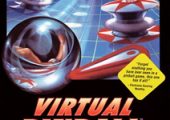
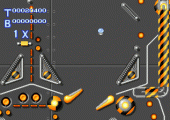
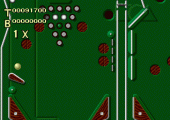
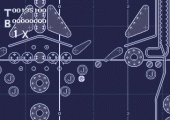
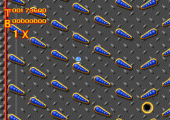
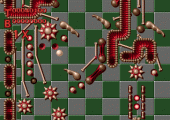
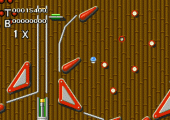
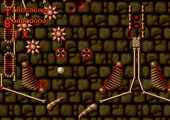
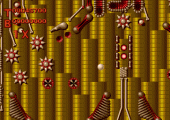
Recent Comments